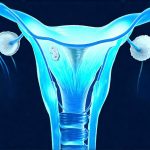Cystitis, an inflammation of the bladder, is a common ailment, particularly among women. While many experience acute episodes, often triggered by bacterial infections, a significant number grapple with recurring bouts – a frustrating cycle that can significantly impact quality of life. Often, individuals don’t realize a flare-up is imminent; instead, they are surprised by the full force of symptoms. Learning to recognize the early signs that cystitis may be returning isn’t about self-diagnosing or replacing medical advice, but rather empowering yourself to proactively manage your health and potentially lessen the severity or duration of an episode. It’s about being attuned to your body and understanding its subtle cues.
The challenge lies in the fact that these early indicators can be incredibly vague, often mimicking other minor ailments or simply feeling like a slight shift in bodily comfort. They’re not typically the intense pain or burning sensation associated with full-blown cystitis; instead, they are more akin to a nagging sense that something isn’t quite right. This makes it easy to dismiss them initially, allowing the inflammation to build before seeking intervention. Recognizing these subtle signals is vital for implementing preventative strategies and, when necessary, consulting a healthcare professional early on. If UTIs keep coming back, knowing what to ask can be very helpful.
Understanding the Prodromal Phase: What’s Happening in Your Body?
The period before cystitis fully develops – what we’re focusing on here – can be thought of as a prodromal phase. This isn’t about ignoring symptoms when they are severe; it’s about catching things at their earliest stages. During this phase, the inflammation is beginning to develop within the bladder lining, but hasn’t yet reached the point where typical, debilitating symptoms like intense burning during urination or urgent and frequent need to urinate take hold. Often, these early signs relate to changes in urinary habits that are easily overlooked, or sensations of discomfort that aren’t immediately linked to a potential cystitis flare-up. This is why increased awareness and self-monitoring are so crucial.
The prodromal phase differs from person to person; some individuals may experience very distinct warning signals, while others will have more subtle indicators. These differences can be due to variations in individual physiology, the underlying cause of recurrent cystitis (e.g., hormonal changes, anatomical factors), and even lifestyle factors. Paying attention to your body’s specific patterns is key. It’s also important to remember that these early signs aren’t definitive proof of a returning infection but should prompt heightened awareness and potentially proactive measures.
This phase is an opportune time to implement preventative strategies like increasing fluid intake, avoiding irritants (caffeine, alcohol), and considering supportive therapies discussed with your doctor. Early intervention can sometimes help nip the budding flare-up in the bud or significantly reduce its severity.
Recognizing Subtle Signals: What To Look For
The early signs of returning cystitis are often more about changes than absolute symptoms. Here’s a breakdown of what to watch out for, categorized by sensation and urinary habits:
- Slight discomfort: A vague ache or pressure in the lower abdomen or pelvic area – not necessarily painful, just…off.
- Increased frequency (but not urgent): Noticing you’re going to the bathroom slightly more often than usual, but without a desperate need to go right now.
- Mild burning: A very subtle stinging sensation during urination that isn’t intense or debilitating. It might be easily dismissed as simply feeling “sensitive”.
- Changes in urine clarity: Your urine may appear slightly cloudier than normal, though still not necessarily discolored.
- Post-void dribbling: Experiencing a small amount of leakage after urinating that you haven’t noticed before.
- Feeling of incomplete emptying: The sensation that your bladder isn’t fully emptied even after going to the bathroom.
It is crucial to differentiate these subtle changes from normal fluctuations in urinary habits. For example, drinking more fluids will naturally lead to increased frequency. However, if you haven’t changed your fluid intake and notice a gradual increase in trips to the restroom coupled with any of the other signs listed above, it’s worth paying closer attention. It is important to be aware that early UTI signs women often miss can easily go unnoticed.
Identifying Your Personal Triggers
Understanding what specifically triggers your cystitis flare-ups is incredibly valuable for early detection. For some, it might be stress; others find that certain foods exacerbate their symptoms. Keeping a diary can be immensely helpful in identifying these personal triggers. This diary should include:
- Detailed record of urinary habits: Frequency, urgency, any discomfort felt during or after urination.
- Dietary log: Record everything you eat and drink, noting potential irritants like caffeine, alcohol, spicy foods, artificial sweeteners, or acidic fruits.
- Stress levels: Rate your stress level each day (e.g., on a scale of 1-10).
- Physical activity: Note any strenuous activities that might have contributed to inflammation.
- Sexual activity: Record if you’ve had sexual intercourse, as this can sometimes be a trigger.
After a few weeks or months, reviewing your diary may reveal patterns and help you identify specific triggers. Once you know what to look for, you can proactively manage those factors when you sense early signs of a flare-up. For instance, if stress is a significant trigger, engaging in relaxation techniques like deep breathing exercises or meditation at the first hint of discomfort might help prevent a full-blown episode.
The Importance of Hydration and Diet
Adequate hydration is arguably the most important preventative measure for cystitis. Water helps to flush bacteria out of the urinary tract, reducing the risk of infection. Aim for at least 6-8 glasses of water per day, although individual needs may vary based on activity level and climate. Beyond just water, dietary choices can play a significant role in both preventing and managing cystitis symptoms.
- Avoid bladder irritants: Limit or eliminate caffeine, alcohol, spicy foods, acidic fruits (citrus, tomatoes), artificial sweeteners, and carbonated beverages.
- Incorporate anti-inflammatory foods: Include foods rich in omega-3 fatty acids (salmon, flaxseeds) and antioxidants (berries, leafy greens).
- Consider D-Mannose: Some people find that D-mannose supplements help prevent UTIs by preventing bacteria from adhering to the bladder wall. Always discuss with your doctor before starting any new supplement.
It’s not about deprivation; it’s about making informed choices. A balanced diet, coupled with adequate hydration, can significantly bolster your body’s natural defenses and reduce your susceptibility to cystitis flare-ups. Be mindful of foods that may worsen cystitis symptoms if you are prone to flare ups.
Early Intervention: When To Seek Medical Advice
While recognizing early signs empowers you to take preventative measures, it is essential not to delay seeking medical advice if symptoms persist or worsen. This information is not a substitute for professional medical care. If you experience any of the following, consult your doctor promptly:
- Fever: A temperature above 100.4°F (38°C) could indicate a more serious infection.
- Back pain or flank pain: This might suggest that the infection has spread to the kidneys. Understanding signs your UTI may be spreading is essential for prompt treatment.
- Blood in urine (hematuria): Even small amounts of blood should be evaluated by a healthcare professional.
- Severe burning during urination: Intense discomfort indicates a significant inflammatory response.
- Symptoms persist for more than 24-48 hours despite self-care measures.
Your doctor can perform tests to confirm the diagnosis, determine the underlying cause (bacterial infection, interstitial cystitis, etc.), and prescribe appropriate treatment, which may include antibiotics or other medications. Remember that early intervention is often key to preventing complications and minimizing the impact of cystitis on your quality of life.





















